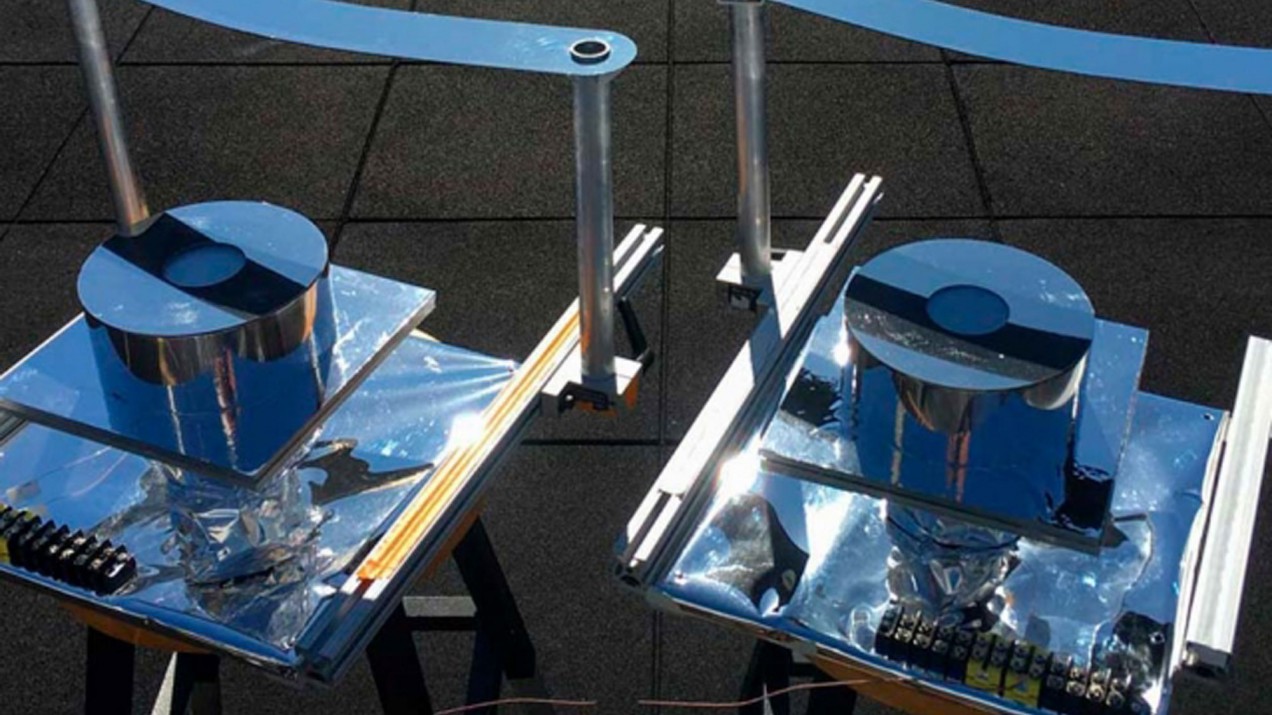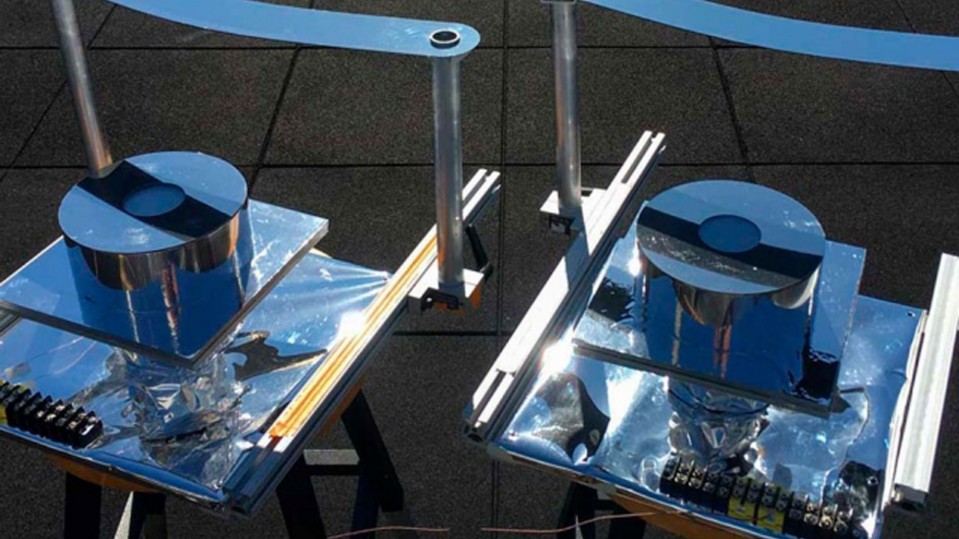

How to keep cool without power
A low-cost system could provide totally passive refrigeration.

MIT researchers have devised a new way of providing cooling on a hot, sunny day, using inexpensive materials and no fossil-fuel-generated power. The passive system, which could be used to supplement other cooling systems to preserve food and medications in off-grid locations, makes use of a high-tech version of a parasol.
The system allows emission of heat in the mid-infrared range of light, which can pass straight out through the atmosphere and radiate into the cold of outer space, punching right through the gases that act like a greenhouse. Developed by research scientist Bikram Bhatia, professor of mechanical engineering Evelyn Wang ’00, and others, it could, in theory, cool things down as much as 40 °C (72 °F) below the ambient temperature in some dry locations, the researchers say. So far, in their initial proof-of-concept testing, they have achieved a cooling of 6 °C (about 11 °F).
Others have attempted to design passive cooling systems that radiate heat in the form of mid-infrared wavelengths of light, which is how most natural objects cool off, but these systems have been based on complex, expensive engineered photonic devices.
It turns out that a similar effect can be achieved with a simple device built from inexpensive plastic film, polished aluminum, white paint, and insulation. A narrow strip of metal, placed at just the right angle to cover the sun’s path across the sky without any active tracking, prevents the heating effect of direct sunlight from overwhelming the radiative cooling. While simple radiative cooling systems have been used since ancient times to achieve nighttime cooling, the sun’s heat has prevented them from being usable in the daytime.
“This would be useful for refrigeration applications, such as food storage or vaccines,” Wang says.